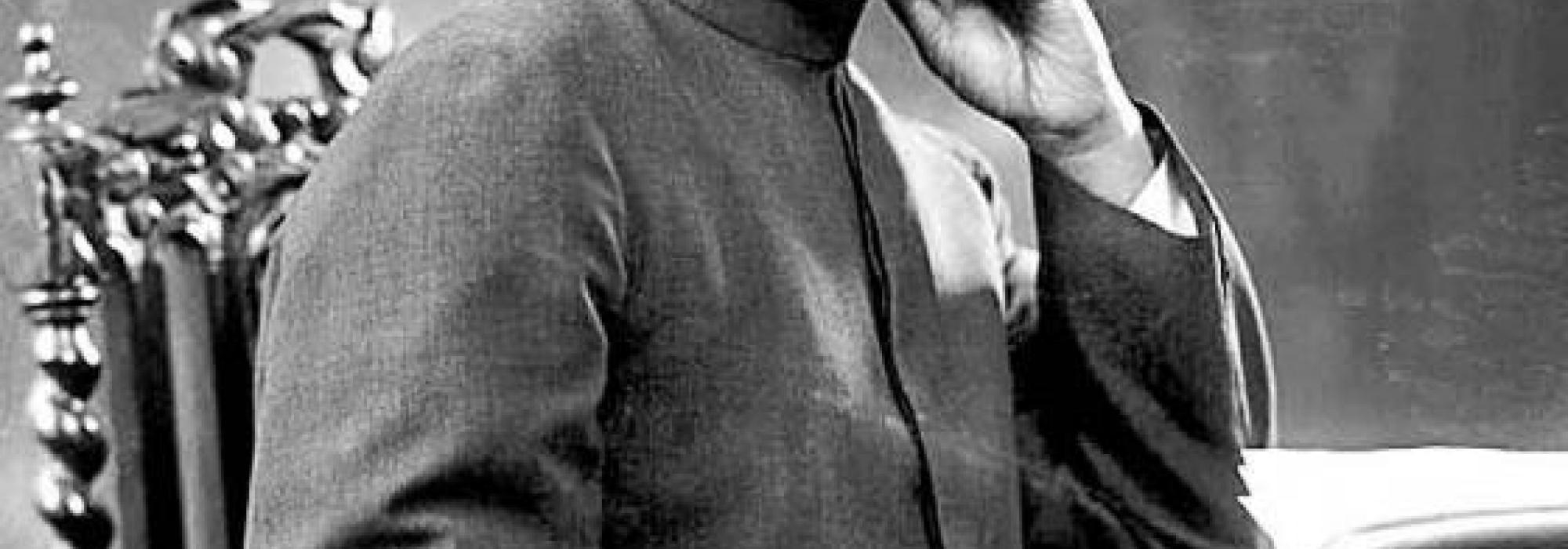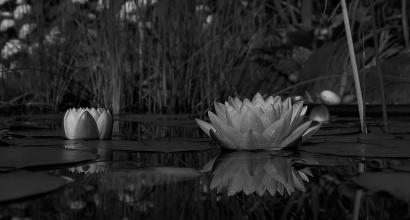‘Kamala Lectures’
In 1926, the Culcutta University invited Srinivasa Sastri to deliver talks as a part of the Kamala Lectures series. The word ‘Kamala’ that appears in the title of the lecture series was the name of the daughter of Ashutosh Mukherjee, the Vice Chancellor of the University. He had initiated the series of endowment lectures and had donated for the purpose. As per the rules of the series, the person invited to deliver lectures at the Culcutta University was to deliver the same series at another university in the country.
Sastri delivered a series of talks on the topic ‘Rights and Duties of the Indian Citizen’ at the Calcutta University in February 1926 and as per the requirements of the endowment series, he delivered the same lectures in Madras in March. I would like to narrate an incident in this connection that throws light on Sastri’s innate nature.
S Krishnaswami Iyer
Many people from different places had gathered in Madras to listen to Sastri’s lectures. The venue of the lecture was an assembly hall of the old Christian College. Sastri was afflicted with bouts of fever starting a couple of days before the scheduled day of the lecture. His friends and relatives who got to know of Sastri’s condition insisted that the lecture series should be postponed. Several prominent men variously advised Sastri to put off the lectures to another date. Sastri did not agree. The then Vice Chancellor of Madras University visited Sastri at his residence and tried to convince him. Sastri paid no heed to his words. Finally, an aged man by name S. Krishnaswami Iyer came to Sastri. The following is what I witnessed then:
S. Krishnaswami Iyer was a friend of V. Krishnaswami Iyer who was very famous back then. He was also older by a few years than the latter. I call him S. Krishnaswami Iyer. He worked in the Police Department and had retired as the Superintendent. V. Krishnaswami Iyer had given the responsibility of taking care of all his future donations and social welfare activities to S. Krishnaswami Iyer. Every household in Mylapore knew S. Krishnaswami Iyer very well. Every morning, he would get up, don vibhuti on his forehead and head out for his social welfare activities. On his way he would bump into people at every footstep and they would greet him. S. Krishnaswami Iyer would answer with a ‘Sriramassharanam’.
One day, one of his friends, it probably was Srinivasa Sastri asked Krishnaswami Iyer –
Sastri: “You say ‘Sriramassharanam’. Why don’t you utter the complete sentence? Doesn’t the sentence go ‘Sri RamassharaNaM mama?’
K: Sir! I have been taught that ‘mama’ (I-ness, mine-ness, ego), needs to be dropped off. I am trying my best to give it up and you remind me of the very word ‘mama’!
This was S.Krishnaswami Iyer’s nature. Srinivasa Satri had great respect for this man.
S. Krishnaswami Iyer sat on the cot on which Srinivasa Sastri was sleeping. He touched Sastri’s body with his palm and called out ‘Srinivasa’. Sastri opened his eyes and exclaimed – ‘Iyer vaaL!’ (‘O Iyer sir!’) and tried to sit up. Krishnaswai Iyer stopped him and asked him to remain laid down.
K: Srinvasa, tell me – who addresses you in the singular (informal) form today?
S: My elder sister was there and now you (respectful plural) are one. After her passing away, tell me, who else do I have other than you (respectful plural) older to me.
K: If that is so, don’t you need to listen to your elders?
S: Tell me anything except regarding the date of the lecture. I will certainly listen to you.
S. Krishnaswami Iyer let out a gentle laugh and said “O child! You have hardly any strength left in you”
S: The lecture is pressing upon my test. If I get the weight of the lecture off, perhaps the temperature will come down too. If we postpone the dates of the lectures, then the weight that I will need to carry will also increase. Hundreds have come here from various far off places. If they plan to stay back in Madras for three or four days, imagine what would be the expenses they incur and the troubles they will go through! This is bothering me the most. Please bless me. The lecture will go well. I am sure the divine will co-operate with the affection you have showered on me.
K: So be it. I will tell you just another thing. I will be at your side during the lecture and give you a tablet and kaSAya every half hour. You should take it. Things will go fine.
Even as Krishnaswami Iyer told this to Srinivasa Sastri, he smeared the incanted vibhUti he had brought on to the latter’s forehead.
As per the premediated arrangement, S.Krishnaswami Iyer brought an Ayurveda doctor to the venue of the lecture that evening and also on the following evening. He made sure that Sastri consumed the prescribed medicine at appropriate hours during the lecture. I had heard the lectures. Just as we had expected, the lectures were went well with an elated and uninterrupted flow and was rich with scholarly content.
Biography of (Gopala Krishna) Gokhale
In about 1924-25, a great resolve blossomed in Sastri’s mind. It was to pen a biography of his guru Gopalakrishna Gokhale and also document in entirety the philosophy with which he carried out his public welfare activities. If Sastri had written this work, it would have been Sastri’s magnum-opus.
Sastri made all the required arrangements to embark on the great task. Sastri put together original copies of tens of letters that Gokhale had written and also tens of letters that he had received from various places. He also compiled the newspaper discussions that had taken place on different political questions, letters and documents related to Gokhale’s older contemporaries and teachers and those of people who were pro and against him. I had given my word to Srinivasa Sastri well in advance that I would take care of those thousands of documents and would help in reading and making notes based on them. Once the bunch of letters fell into our hands, we planned to first skim through them all. I would then arrange them chronologically as per dates and classify them as a function of the person involved and the context in which it was written. We would then go through the letters and write its summary in a couple of sentences in a docket and put them all together. This was the course of action we had together come up with.
During the particular visit to Bangalore, Sastri had taken residence at a house in Shankarapura, very close to my residence. Therefore, it was easy for us to carry out our work quickly. A couple of young men also joined us on the task. The work kindled great curiosity in me. There were letters which belonged to those stalwarts who were closely associated with our nation’s history. The letters that Visvesvaraya had written to Gokhale, the corresponsdence with Vacha, the exchange with Sir. K.G. Gupta of Bengal and with Basu, the letters exchanged between Gokhale and all the prominent leaders from different provinces of the country were compiled. Similarly, the correspondence between Gokhale and the overseas friends of India such as Wedderburn and Sir Henry Cotton were also found. We examined over half of these documents. Sastri travelled to Poona saying that he would go through them once again.
Sastri housed these documents in the Aryabhushana Publication house that belonged to the Servants of India Society in Poona. The building caught fire due to some unfortunate mishap. With the building several things in housed there got destroyed. The collection of Gokhale’s letters also was reduced to ashes in the incident. Sastri’s resolve did not bear fruits – it saw its end.











































